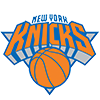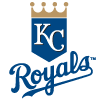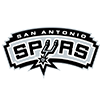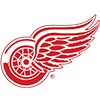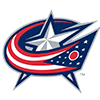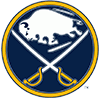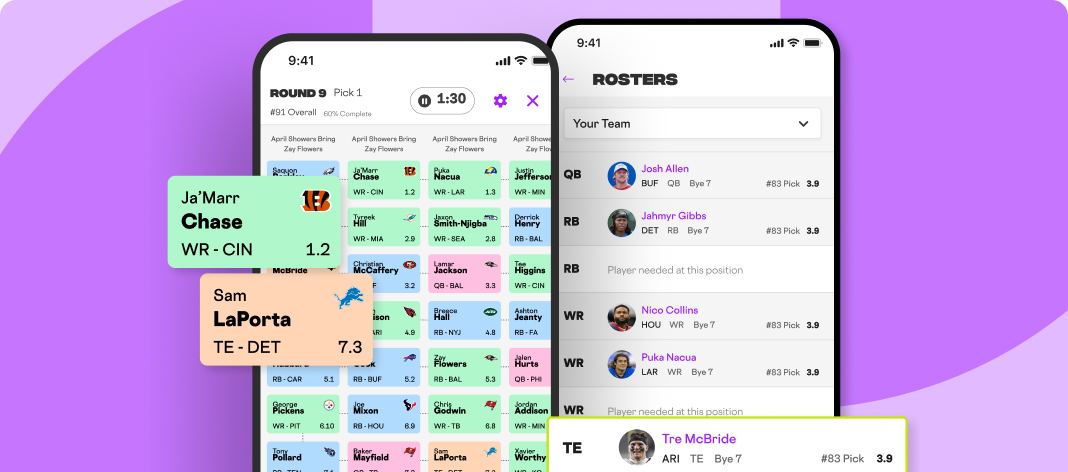Top NHL Draft Prospects: Ranking Future Stars and Hidden Gems
This draft seemingly earned a reputation long ago of not being all that great. Now that it's upon us, it seems, at least in my viewings, to be about average. It may lack ideal elite depth at the very top, but there's still a handful of players that project as NHL stars and a boatload more that project as high-end complementary pieces in some form or fashion. In terms of tiers, I would rank them as 1, 2-7, 8-12, 13-22, and 23-32.
(Note: This is not a mock draft and does not take any team's needs into account.)
Top NHL Draft Prospects: Ranking the Elite Contenders
- Matthew Schaefer (D, Erie-OHL): Schaefer has been an elite prospect for a while -- he was the first overall pick in the 2023 OHL Draft -- but he played his way into the No. 1 spot over the past year or so. The most remarkable thing of all is that he hasn't actually played much hockey this season. Schaefer's season got off to a late start due to illness, and he then broke his collarbone after colliding with the post in Canada's second World Junior game. Part of the appeal is the fact that with an early September birthday, Schaefer made the cutoff for this year's draft by just two weeks. A do-it-all rearguard with elite skating ability and a high-end brain, Schaefer can shut down offensive advances in an instant and use his
Top NHL Draft Prospects: Ranking Future Stars and Hidden Gems
This draft seemingly earned a reputation long ago of not being all that great. Now that it's upon us, it seems, at least in my viewings, to be about average. It may lack ideal elite depth at the very top, but there's still a handful of players that project as NHL stars and a boatload more that project as high-end complementary pieces in some form or fashion. In terms of tiers, I would rank them as 1, 2-7, 8-12, 13-22, and 23-32.
(Note: This is not a mock draft and does not take any team's needs into account.)
Top NHL Draft Prospects: Ranking the Elite Contenders
- Matthew Schaefer (D, Erie-OHL): Schaefer has been an elite prospect for a while -- he was the first overall pick in the 2023 OHL Draft -- but he played his way into the No. 1 spot over the past year or so. The most remarkable thing of all is that he hasn't actually played much hockey this season. Schaefer's season got off to a late start due to illness, and he then broke his collarbone after colliding with the post in Canada's second World Junior game. Part of the appeal is the fact that with an early September birthday, Schaefer made the cutoff for this year's draft by just two weeks. A do-it-all rearguard with elite skating ability and a high-end brain, Schaefer can shut down offensive advances in an instant and use his feet to lead the charge the other way. His awareness in all three zones is exceptional for a 17-year-old, and while he may not be the type to post 60-plus points annually at the NHL level, this is the type of young defensive building block every single NHL team should be targeting at the top of the draft. He's that good.
- Michael Misa (C, Saginaw-OHL): Speaking of being on the prospect map for a while, Misa was granted exceptional status to join the OHL as a 15-year-old in 2022-23. He was good in each of his first two years in the league, but dominated this year to the tune of 62 goals and 134 points in 65 games to lead the OHL in scoring. Misa can play both center and wing, but his huge year coincided with him moving back to the middle, which is where whichever NHL team drafts him will play him. Misa has above-average skills across the board and has shown a real ability to make high-end plays at top speed. The effort level is strong for a kid who will be known for his offensive production. Misa has shown more than enough over the past 12 months to be ranked as the top forward on my board.
- James Hagens (C, Boston College-NCAA): Hagens was the player viewed as the most likely No. 1 pick entering the year, and while he by no means played poorly, he just wasn't as dynamic as the two guys above him here. Hagens spent the entire year at Boston College, averaging exactly a point per game (11 goals, 37 points in 37 games). He had some really nice moments at the World Juniors, finishing with five goals and nine points in seven games in helping Team USA win the gold medal. I have no issues with his effort level, but Hagens will never be mistaken for a physical grinder. He's here to contribute offensively. A playmaker possessing very good speed and creativity with the puck, Hagens looks like a high-end No. 2 NHL center.
- Porter Martone (RW, Brampton-OHL): I've always found Martone to be a particularly tough evaluation. On one hand, it's impossible to argue with the scoring numbers. He had 37 goals and 98 points in 57 OHL games this season. He's extremely talented, plays hard, and can shoot the puck. All that said, the pace and lack of foot speed are a concern. He made the Canadian World Junior team, but only appeared in three games and wasn't much used on the nights he did dress. The brief cameos did not help his draft stock. I understand investing early in a 6-foot-3, 210-pound hulking winger with hands and a strong work ethic. I'd still be terrified if my team invested a top-five pick here. I'd be pretty surprised if there's any middle ground for Martone. I expect him to either become a clear top-six scoring winger or a massive bust.
- Anton Frondell (C, Djurgarden-Sweden): Frondell was banged up late last season and early into this year, and his play suffered early as a result. Yet he was finally able to find his stride after a bit and finished with a very impressive 11 goals and 25 points in 29 games for Djurgarden in Sweden's second-tier Allsvenskan. He plays a hard, heavy game and can play both center and wing. I've found Frondell a bit more creative when playing the flank, but he's responsible defensively, so it seems likely he will at least start out in the middle. Frondell seems like a high-floor prospect with multiple paths to contributing top-six value for an NHL club down the road.
- Caleb Desnoyers (C, Moncton-QMJHL): The former No. 1 overall pick in the 2023 QMJHL Draft, Desnoyers was the best player this season (35 goals, 84 points in 56 games) for a Moncton team that was by far the best in the QMJHL. Much of Desnoyers' game is underappreciated. Sure, he has the above-average offensive abilities typically associated with a forward that is expected to be drafted this high, but it's his secondary skills that really stand out. Desnoyers works his tail off and is seemingly always in the right position. He's the type of center a coach trusts enough to defend a one-goal lead with a minute left. I've been very impressed with Desnoyers' development thus far and think he's still being a bit underappreciated throughout the draft process.
- Jake O'Brien (C, Brantford-OHL): The 2023-24 OHL Rookie of the Year, O'Brien took another significant step forward in 2024-25, closing with 32 goals and 98 points in 66 games, placing him tied for seventh in OHL scoring. O'Brien played for an excellent team in Brantford with talented teammates, but he more than earned his lofty point total. O'Brien is the type of center that excels in open space and problem-solves his way through tough situations due to his fantastic hockey IQ. He's by no means soft, but at about 6-foot-2 and 170 pounds, most of his offense is perimeter-based. You're betting on skill and hockey IQ at this point, which seems like a pretty good bet to make given O'Brien's constant improvement in recent seasons.
- Victor Eklund (LW, Djurgarden-Sweden): The brother of San Jose forward William Eklund, who went seventh overall to the Sharks in 2021, Victor has an outside shot to become the highest drafted member of the family. Eklund is extremely noticeable every single shift. He's only about 5-foot-11 and 160 pounds, but he loves to throw the body around and get in on the forecheck and cause havoc. He also has difference-making speed and can really shoot the puck. The combination of skill and will is tremendous. I love him. I see a multi-dimensional weapon that can be deployed and make a high-end impact in numerous different roles.
- Roger McQueen (C, Brandon-WHL): McQueen's status on draft day is likely to be entirely reliant on his medicals. He's had multiple back ailments in the past and was limited to just 20 games this season, posting 10 goals and 10 assists. If you catch McQueen at his best, he looks dominant, which isn't all that surprising given 6-foot-5 right-handed shooting centers with hands that don't grow on trees. His skating and overall coordination have improved as he's grown into his body. The upside here would appear to be massive, but McQueen is yet to really dominate for an extended period of time, and back issues at this age are a potentially serious long-term concern.
- Radim Mrtka (D, Seattle-WHL): If you're looking for a defender who has been flying up draft boards in recent months, this is your guy. Mrtka began the season in his native Czechia before limited usage prompted a move to Seattle. He joined up with the Thunderbirds and has since become a rock for the club, posting 35 points in 42 games while getting a ridiculous amount of ice time in all situations. Nearly 6-foot-6 and well over 200 pounds, Mrtka has the frame to develop into a shutdown defenseman. He's on the right path, battling hard and putting an end to opposing cycles with his size and reach alone. Offensively, his skills are average to a tick above, depending on your viewing. The frame and the foot speed alone make Mrtka a worthy gamble in the late lottery, with the ceiling way more than that if everything continues to develop.
- Carter Bear (LW, Everett-WHL): Bear was in the midst of a monster year (40 goals, 82 points in 56 games) before the back of his leg was cut by a skate in an early March game, ending his season. That said, Bear put more than enough good work on tape throughout the year to be an option in the mid-to-late stages of the lottery. He combines electric one-on-one puck skills with more than enough speed and an excellent work ethic. Bear battles hard in all three zones and is responsible defensively. He's equally adept at both finishing himself and using his teammates. Bear is one of my favorite players in the entire draft. He should be amongst the WHL's leading scorers in 2025-26.
- Brady Martin (C, Sault Ste. Marie-OHL): An extremely honest player and hard worker, Martin was a do-everything leader for the Greyhounds this season, playing in every situation imaginable and finishing with 33 goals and 72 points in 57 games. Martin has displayed an ability to consistently put up points, but part of that was due to his usage. His offensive abilities are closer to average than above. Martin may lack dynamic skill, but he can shoot the puck, and he's noticeable every single time he's on the ice. I typically advocate drafting for skill, especially in Round 1, but Martin's skill set is typically in high demand on draft night. Because of the work ethic, you know he's going to get the most out of his natural abilities. Martin has gotten so much late helium that he may end up in the top five.
- Kashawn Aitcheson (D, Barrie-OHL): You have to dig deeper than the numbers in order to assess Aitcheson's true value as a player. He had 26 goals and 59 points in 64 games, and while he should be able to bring a decent amount of secondary offense to the table, that's far from his greatest strength. Aitcheson is an in-your-face battler. His compete level is off the charts at all times, blocking shots, throwing hits, and making life miserable for opponents. He's been known to cross the line and have to be reeled in, but I'd rather that as opposed to teaching a kid to play with more jam. Aitcheson is an excellent athlete and, in some way,s still learning the finer points of the game. Some NHL club is going to take him quite high in hopes they can clean up the flaws just a bit and end up with an uber-physical, top-four defender on their hands.
- Justin Carbonneau (RW, Blainville-Boisbriand-QMJHL): Carbonneau had an excellent season for the Armada, finishing tied for second in QMJHL goal scoring with 46 in 62 games and establishing himself as that league's second-best draft prospect behind Desnoyers. Carbonneau shoots the puck a ton and has displayed the ability to constantly beat opposing goaltenders from distance. He reads plays well and gets his marks for his effort level. Carbonneau has a little less runway than some of the other top prospects, being he turned 18 years of age in late November, but he looks like a solid across-the-board contributor. Probably a good third-liner with the chance for a bit more if everything breaks correctly.
- Cole Reschny (C, Victoria-WHL): Reschny had a terrific season, finishing tied for ninth in WHL scoring with 92 points in 62 games. His plus-42 rating was also ninth-best in the league. He's proven to be a dynamic offensive player at the junior level, weaving in and out of traffic and doing a ton of damage with the man advantage. Reschny also plays hard despite the fact that he's about 5-foot-10 and 185 pounds. The one thing Reschny's game lacks is the breakaway speed you like to see from smaller players, but between the natural puck skills and the work ethic, he should be just fine. Reschny projects to be one of the higher upside plays towards the end of Round 1. He, along with top 2026 draft prospect and fellow Victoria Royal Keaten Verhoeff, are joining the University of North Dakota in the fall.
- Malcolm Spence (LW, Erie-OHL): Spence is another guy with middling offensive abilities who sees his tools play up across the board because of his work ethic and tenacity. He plays hard in all three zones and is willing to do anything to help his team win. Spence had 32 goals and 73 points in 65 games for Erie this past season, so he's by no means a zero from a scoring standpoint, but I see his future as a solid complementary third-liner as opposed to a play-driving top-six winger. Spence has played for Canada in multiple international tournaments and was the No. 2 overall pick in the 2022 OHL Draft, so he's been on the prospect map for a while. Like many CHL players, Spence has decided to leave the junior ranks for the NCAA. He's off to the University of Michigan in the fall.
- Jackson Smith (D, Tri-City-WHL): Another in a long line of well-known prospects eligible here, Smith was the No. 2 overall selection in the 2022 WHL Bantam Draft. Checking in at north of 6-foot-3, Smith should play at upwards of 215-220 pounds when all is said and done. He managed 11 goals and 54 points in 68 games this season, but I think those numbers oversell his offensive ability a bit. I'm not a huge fan of Smith's ability to process things quickly on the ice, particularly when opposing forecheckers are closing in. The size is intriguing and the foot speed is at least average, if not a tick above, so there are reasons to be excited, but Smith has a chance to be selected in the late lottery, and that's too high for me. Smith recently announced he is bolting Tri-City for Penn State.
- Lynden Lakovic (LW, Moose Jaw-WHL): Lakovic was forced to carry the load this season for a Moose Jaw team that gave up 119 more goals than they scored. He missed a bunch of time in the middle of the year with a broken collarbone, finishing with 27 goals and 58 points in 47 games. The appeal with Lakovic is the size/speed combination. He's 6-foot-4 and can really skate and shoot the puck. The playmaking skills aren't great, but I can't help but wonder if there would have been fewer questions surrounding Lakovic's overall game if he had literally anyone to play with. He's far from a finished product, and you're essentially betting on his individual skills at this point.
- Logan Hensler (D, University of Wisconsin-NCAA): One of the draft's older players with a mid-October birthday, Hensler recently completed his first season for the Badgers, finishing with two goals and a dozen points in 32 games. He was a bit of a surprise inclusion on the US World Junior team, but primarily struggled in a limited role, which was completely different from the role he was playing at Wisconsin. Hensler has a bunch of average skills across the board, and I would venture that the vast majority of scouts were hoping to see more from him this season. I don't think Hensler has the offensive ability to post more than 25-30 points at the NHL level, nor is he mean and physical enough to develop into a true shutdown guy despite having good size at 6-foot-2 and 195 pounds. A reasonable outcome would likely be that of a third-pairing rearguard, an NHL regular who plays a dozen-plus years in the league without being all that noticeable in any one area.
- Braeden Cootes (C, Seattle-WHL): Cootes managed to raise his draft stock despite having very little talent around him on a Seattle team that had to win its final four games of the year just to finish three below .500. His offensive numbers (26 goals, 63 points in 60 games) were underwhelming for a top prospect, but Cootes did everything asked of him and performed admirably in each role. He killed penalties, played on the No. 1 power-play unit, and was tasked with trying to shut down the other team's top players. Cootes isn't very big at 5-foot-11 and 185 pounds, and his offensive abilities are closer to average than above-average, but his work ethic is strong, and he projects as a solid two-way third-line center that will get the most out of his abilities.
- Ivan Ryabkin (C, Muskegon-USHL): There are probably more dissenting opinions on Ryabkin than any player expected to go in Round 1. He began the year in his native Russia, playing at three different levels, including two games in the KHL before his role decreased and he moved to Muskegon midseason. He played 25 games for the Lumberjacks, scoring 18 goals. Ryabkin has easy top-six offensive instincts. The puck skills and playmaking abilities are clearly above average. His skating is at least average. That's the good news. The bad news is that there have been discipline issues in the past. Ryabkin doesn't trust his teammates enough, and the effort level tends to be inconsistent. It appears highly likely at this point that he is slipping out of Round 1, and I could see certain NHL organizations passing altogether, but my guess is that some team values the upside and pulls the trigger fairly early. Ryabkin's in-person interviews leading up to the draft figure carry plenty of weight.
- Cullen Potter (C, Arizona State-NCAA): The son of former US Women's National Team standout Jenny Potter, Cullen left the US NTDP early, flipping his college commitment from Michigan State to Arizona State in the process. He debuted in the NCAA this past season and closed with 13 goals and 22 points in 35 games. Potter's calling card is his all-world speed. He's unquestionably the best skater in the draft, and whenever you make that claim, you can make an argument he's a solid pick. Potter got better as the year progressed, which isn't surprising given the massive jump in competition, even at a smaller program like ASU. The rest of Potter's game, other than his skating, is a work in progress. It's going to take a while, but Potter has a foundational skill to fall back upon, something rarely seen in the area of the draft in which he is projected to go.
- Cameron Reid (D, Kitchener-OHL): Scouts got a ton of looks at Reid this season, as it seemed as if he was playing 25-plus minutes for Kitchener every single night. He closed with 14 goals, 54 points, and a plus-39 rating in 67 games. Reid is the "modern" NHL defenseman in many aspects. He wins with mobility and creativity as opposed to sheer size (5-foot-11, 195 pounds). His hockey sense is strong, and he plays hard for a guy that is undersized. I don't see Reid as a PP1 guy at the NHL level, but his all-around skill set should allow him to contribute plenty of secondary offense while also helping a ton with the transition game. He's a good player.
- Jack Nesbitt (C, Windsor-OHL): NHL teams love drafting players out of Windsor. They also love centers with size and skill. Combine all that with the fact that Nesbitt was one of the most improved players in the OHL this season, and you have a likely Round 1 pick on your hands. Nesbitt finished the year with 25 goals and 64 points in 65 games, one season after posting an ugly nine goals and 18 points in 58 games. The big concern here is a lack of foot speed. Nesbitt really labors around the ice at times, but his reach is long and he's willing to compete. He's not only big, but he plays big. If Nesbitt is able to put it all together, some organization is going to have a monster on its hands.
- Bill Zonnon (LW, Rouyn-Noranda-QMJHL): Zonnon has seen his production rise each of his three years in the "Q", and he closed this past season with 28 goals and 83 points in 64 games. He's a very likable player. Zonnon is seemingly always around the puck, making smart plays to help his team win. He's very much a generalist in terms of creating offense, but there are no noticeable holes in his game, either. Zonnon has the look of a very good complementary winger that can play center in a pinch. The upside here would appear to be a bit limited, but every player expected to go in this range of the draft has some sort of flaw. Zonnon would appear to be one of the safer bets.
- Benjamin Kindel (C, Calgary-WHL): Kindel was excellent all season long for the Hitmen, serving as a dominant offensive player while finishing seventh in WHL scoring with 35 goals and 99 points in 65 games. Kindel has played center at times, but because he's 5-foot-10 and 175 pounds, I think he's a long-term winger. That lack of size is really the only noticeable flaw in his game. Kindel has above-average puck skills, and he plays very hard, but he's slight, and you have to be really skilled to make it as an undersized offensive player at the NHL level. There's a clear risk here, but Kindel seems like a guy who is going to get the most out of his abilities, and that's the kind of guy you want to bet on towards the end of Round 1.
- Joshua Ravensbergen (G, Prince George-WHL): Ravensbergen seems likely to sneak into Round 1, which would make him by far the best goaltending prospect of the last two years. He's all future potential at this point because his numbers this past season weren't great (3.00 GAA, .901 save percentage in 51 games), and he played far better two years ago. Ravensbergen is 6-foot-5 and athletic. Those two traits alone will have him in high demand come draft night. He reminds me a bit of another huge former WHL goaltender, Detroit's Sebastian Cossa. Cossa had better numbers throughout his junior career than Ravensbergen has, but the common thread the two share is the size, and Cossa ended up going 15th overall in 2021. I don't think Ravensbergen will go that high, but he shouldn't have to wait much beyond that to hear his name called.
- Milton Gastrin (C, MoDo-Sweden): Gastrin has served as captain for his native Sweden in multiple international tournaments in the past and has been on the prospect map for quite a while. He's longed to earn high marks for both his two-way work ethic and ability to fill a variety of different roles. Reasonably sized at 6-foot-1 and 185 pounds, Gastrin is a lock to remain down the middle. He lacks ideal top-six skill, but Gastrin can finish whatever offensive looks are presented to him by his linemates, in addition to going to the difficult areas of the ice to make a play. I don't think he's a star, but I do think Gastrin has a chance to develop into an extremely thorough and useful third-line center in a few years.
- Sascha Boumedienne (D, Boston University-NCAA): The son of former NHL'er Josef Boumedienne, who played parts of three seasons in the league, Sascha was a regular for Boston University this past season despite the fact that he didn't turn 18 years of age until January. He predictably struggled early on before slowly but surely finding his way. Boumedienne's calling card is his skating. His puck skills are basic, and his game lacks physicality at times, but he moves well enough to serve as an individual breakout, and his foot speed can help make up for poor reads. He looks like a depth regular to me as long as some NHL team can get him to consistently simplify his game. Boumedienne figures to spend at least three years in college.
- Eric Nilson (C, Djurgardens Jr.-Sweden): I wish Nilson put up a few more points this season, as he barely averaged a point-per-game (12 goals, 38 points in 37 games) in the Swedish U20 Jr. league, but I think the lack of production undersells both his offensive abilities and long-term potential. He thinks the game well in all three zones. Possessing a clear above-average hockey sense, Nilson plays with a ton of pace and can do a variety of things to help a hockey club win games. He has to get bigger and stronger, but if you think the offense will come, he should be in the discussion for the final handful of picks in Round 1. He has already committed to play for Michigan State in the fall, which should only help raise his stock in the eyes of NHL evaluators.
- Adam Benak (C, Youngstown-USHL): I really wanted to rank Benak higher because I'm a believer in the player and love his skill set, but I ultimately couldn't get there. For starters, he's probably a winger at the NHL level. The 18-year-old Czech import was one of the best players in the USHL this past season, being named to the All-Rookie Team and Second All-Star Team after posting 17 goals and 59 points in 56 games for Youngstown. Benak oozes skill and creativity. He seems to constantly have the puck on his stick and knows what to do with it. That said, Benak is currently about 5-foot-7 and 160 pounds. His effort level is fine, but he gets forced to the perimeter too often simply because there's only so much damage you can do at that size. Benak's going to have to add 15-20 pounds of muscle and still maintain all the attributes that make him a potential top prospect. It's a big ask, but the ceiling is massive if he can somehow manage to do it.
- Kurban Limatov (D, Dynamo Moscow Jr.-Russia): Receiving massive amounts of usage in the Russian Jr. league, Limatov was a legitimate difference-maker for Dynamo Moscow. He finished with eight goals and 23 points in 46 games before adding a pair of goals and five points in seven postseason appearances. Limatov has it all. He's big (6-foot-3, 200 pounds), strong, and can play the game any way you'd like. He makes smart decisions with the puck, knows when to jump into the play offensively, and battles hard in his own zone. I wish he had gotten some KHL games and/or a chance to play against top players in his age group at the World Juniors, but I've been impressed with what I've seen thus far. I don't expect Limatov to go this high, however. He's likely an early-to-mid second-rounder.
Ranking the Next 32 NHL Prospects
33. Blake Fiddler (D, Edmonton-WHL)
34. Jakob Ihs Wozniak (RW, Lulea Jr-Sweden)
35. Will Horcoff (C, University of Michigan-NCAA)
36. William Moore (C, US NTDP-USHL)
37. Shane Vansaghi (C, Michigan State-NCAA)
38. Cole McKinney (C, US NTDP-USHL)
39. Jack Murtagh (LW, US NTDP-USHL)
40. Daniil Prokhorov (RW, St. Petersburg Jr-Russia)
41. Semyon Frolov (G, Spartak Jr-Russia)
42. Alexander Zharovsky (RW, Ufa Jr-Russia)
43. Jack Ivankovic (G, Brampton-OHL)
44. Eddie Genborg (RW, Linkoping-SHL)
45. Mason West (C, Edina HS-Minnesota)
46. Simon Wang (D, Oshawa-OHL)
47. Ryker Lee (RW, Madison-USHL)
48. Henry Brzustewicz (D, London-OHL)
49. Cameron Schmidt (RW, Vancouver-WHL)
50. Vaclav Nestrasil (RW, Muskegon-USHL)
51. Owen Conrad (D, Charlottetown-QMJHL)
52. Ethan Czata (C, Niagara-OHL)
53. Luca Romano (C, Kitchener-OHL)
54. Pyotr Andreyanov (G, CSKA Jr- Russia)
55. Theo Stockselius (C, Djurgarden Jr-Sweden)
56. Max Psenicka (D, Portland-WHL)
57. Conrad Fondrk (C, US NTDP-USHL)
58. Alexei Medvedev (G, London-OHL)
59. Peyton Kettles (D, Swift Current-WHL)
60. Nathan Behm (RW, Kamloops-WHL)
61. Jacob Rombach (D, Lincoln-USHL)
62. Carter Amico (D, US NTDP-USHL)
63. Tyler Hopkins (C, Kingston-OHL)
64. Drew Schock (D, US NTDP-USHL)
NHL Prospects Just Outside the First Two Rounds
- Lucas Beckman (G, Baie-Comeau-QMJHL)
- Matthew Gard (C, Red Deer-WHL)
- Theodor Hallquisth (D, Orebro Jr-Sweden)
- Ben Kevan (RW, Des Moines-USHL)
- Gustav Hillstrom (C, Brynas Jr-Sweden)










